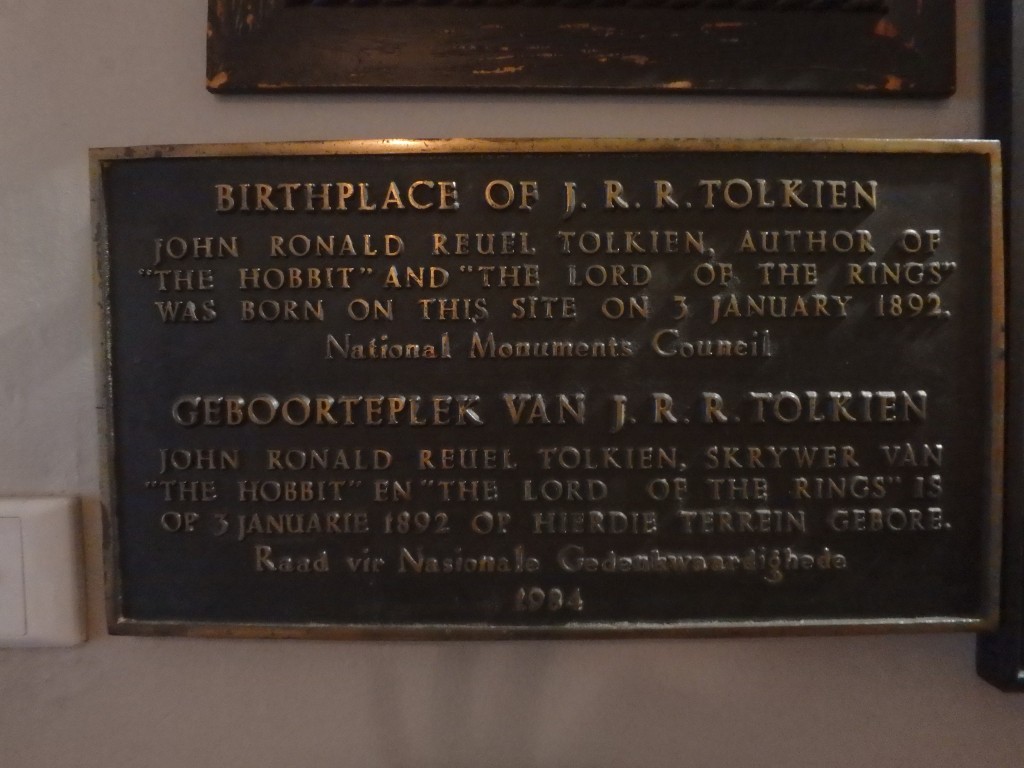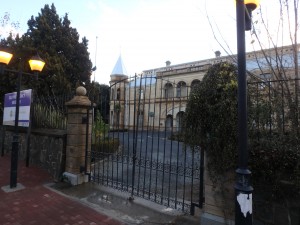http://cakebysadiesmith.co.uk/wp-json/wp/v2/posts/1993 June 27th.
buy Latuda canadian pharmacy Bloomfontein. Bloomfontein is different from the other places we have seen; a large, sprawling city, with more middle-class homes than we have seen anywhere else. Much of it looks like the middle-class suburbs of Los Angeles: sundrenched gardens made leafy by ample water, gardens closed off by attractive walls of adobe and concrete, multiple cars in the driveways and absolutely not a soul to be seen on a Saturday afternoon. In general this is how we tell the white areas of the country: the places that look empty, where there are no people, probably are owned by whites.
 Downtown it was quiet, and somewhat depressing. We were on a pilgrimage to see the birthplace of J.R.R. Tolkien; little information was available about the site, but our guide book recommended going to the Hobbit Hotel, where the local Tolkien Society meets, and ask there. There was a plaque at the hotel, proclaiming that Tolkien had been born on the spot in 1892. I had read elsewhere, however, that he was not born there, but nearby, but the house was destroyed in a flood and bits of it had been used in the construction of this building. But this building was heavily restored, a modern hotel not suffering from a horrible excess of quaintness or character. The concierge knew nothing about Tolkien, not even about the existence of the plaque in the room next door, much less anything else about the Tolkien sites.
Downtown it was quiet, and somewhat depressing. We were on a pilgrimage to see the birthplace of J.R.R. Tolkien; little information was available about the site, but our guide book recommended going to the Hobbit Hotel, where the local Tolkien Society meets, and ask there. There was a plaque at the hotel, proclaiming that Tolkien had been born on the spot in 1892. I had read elsewhere, however, that he was not born there, but nearby, but the house was destroyed in a flood and bits of it had been used in the construction of this building. But this building was heavily restored, a modern hotel not suffering from a horrible excess of quaintness or character. The concierge knew nothing about Tolkien, not even about the existence of the plaque in the room next door, much less anything else about the Tolkien sites.
From the hotel we went off in search of the Anglican cathedral, where he was baptized, but we could not find it: we asked around for it but no one knew where it was (and I suspected many did not quite know what it was either). We asked at the Bloomfontein Museum, to no avail; we tried to ask at a Catholic church, but it was locked and bolted, as all churches are in this land; we even went to the town’s fire department, which we presumed would know about all the buildings: after some hesitation they directed us to a church, but neither an Anglican one nor a cathedral.
We were affected by this especially because it seemed symbolic of life in Bloomfontein. Downtown is dominated by monumental sandstone buildings, mostly from the days of the Republic, the Orange Free State which had been founded by Boer trekkers to escape from British rule. The British had annexed it in 1848, lost it in 1854, regained it during the Second Boer War, after which it became a province of the Union of South Africa, with Bloomfontein becoming the home of South Africa’s Supreme Court. Its buildings had the sad, slightly decrepit air of things which had outlasted what they were built to represent. We saw the Presidential Mansion of the Republic, its gate bent on its hinges, the place quiet and weedy, with no indication of what it might be used for today; a court-house all boarded up; the museum where we asked for directions was locked even during its open hours, and it took much banging on the door to get someone to come to it. And such things as an “Anglican Cathedral” or “Cathedral of the Church of England” – it was a phrase that no longer meant anything to the people on the street.

Post a Comment